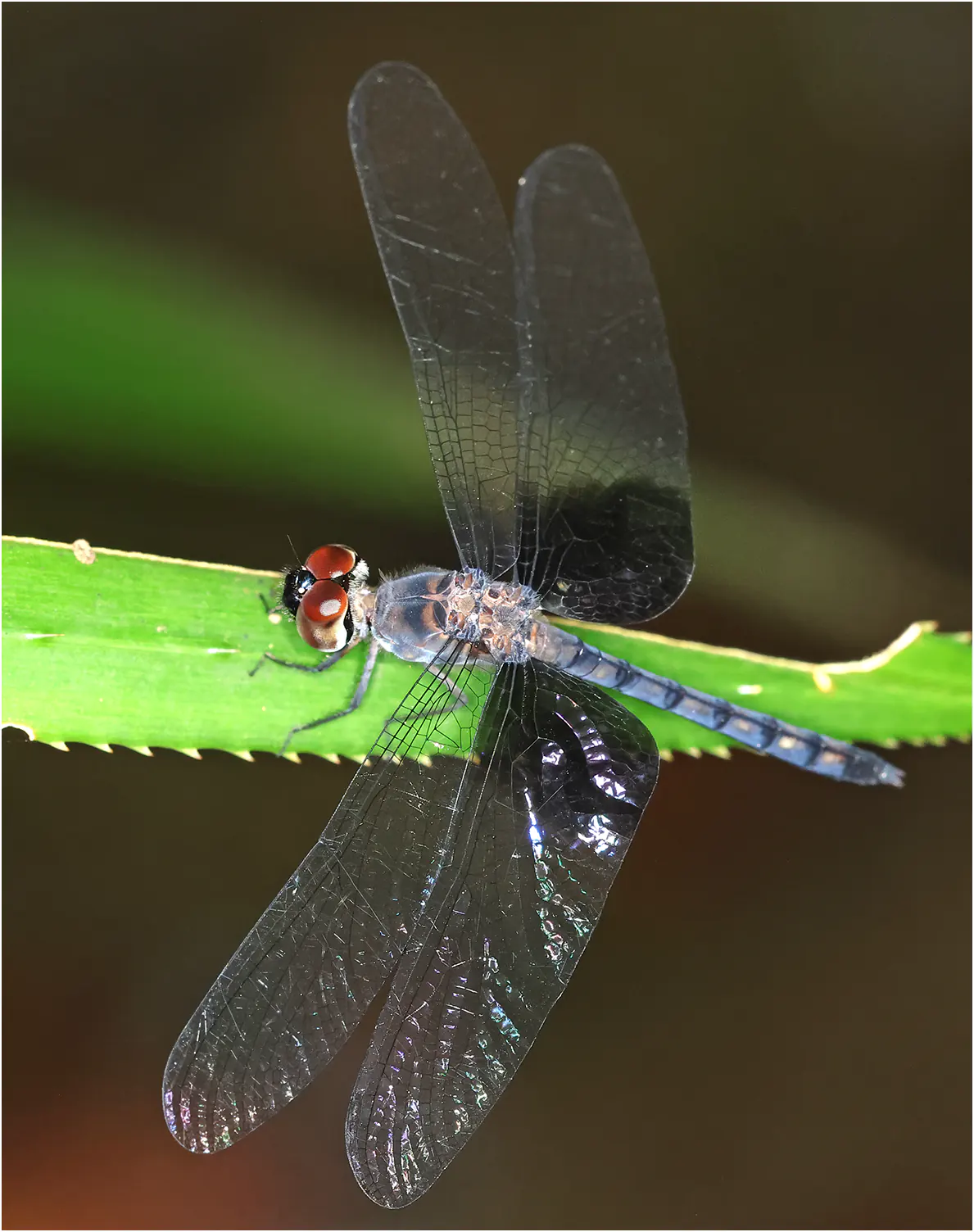
Tyriobapta torrida male (1) is part of a genus that includes only three species, all present in Borneo. They are very similar in general appearance and thoracic patterns of young individuals, but are easily differentiated by the extent of the basal wing coloration, that of Tyriobapta torrida being by far the most important, that of T. laidlawi (not contacted) very limited, while it is totally absent for T. kuekenthali (photos available later).
It is a small Libellulidae that I had already encountered in Peninsular Malaysia and one is immediately struck by the relative length of the wings and that of the insect. It measures 29 to 32 mm while only one of its hind wings reaches 25 to 26 mm (2).
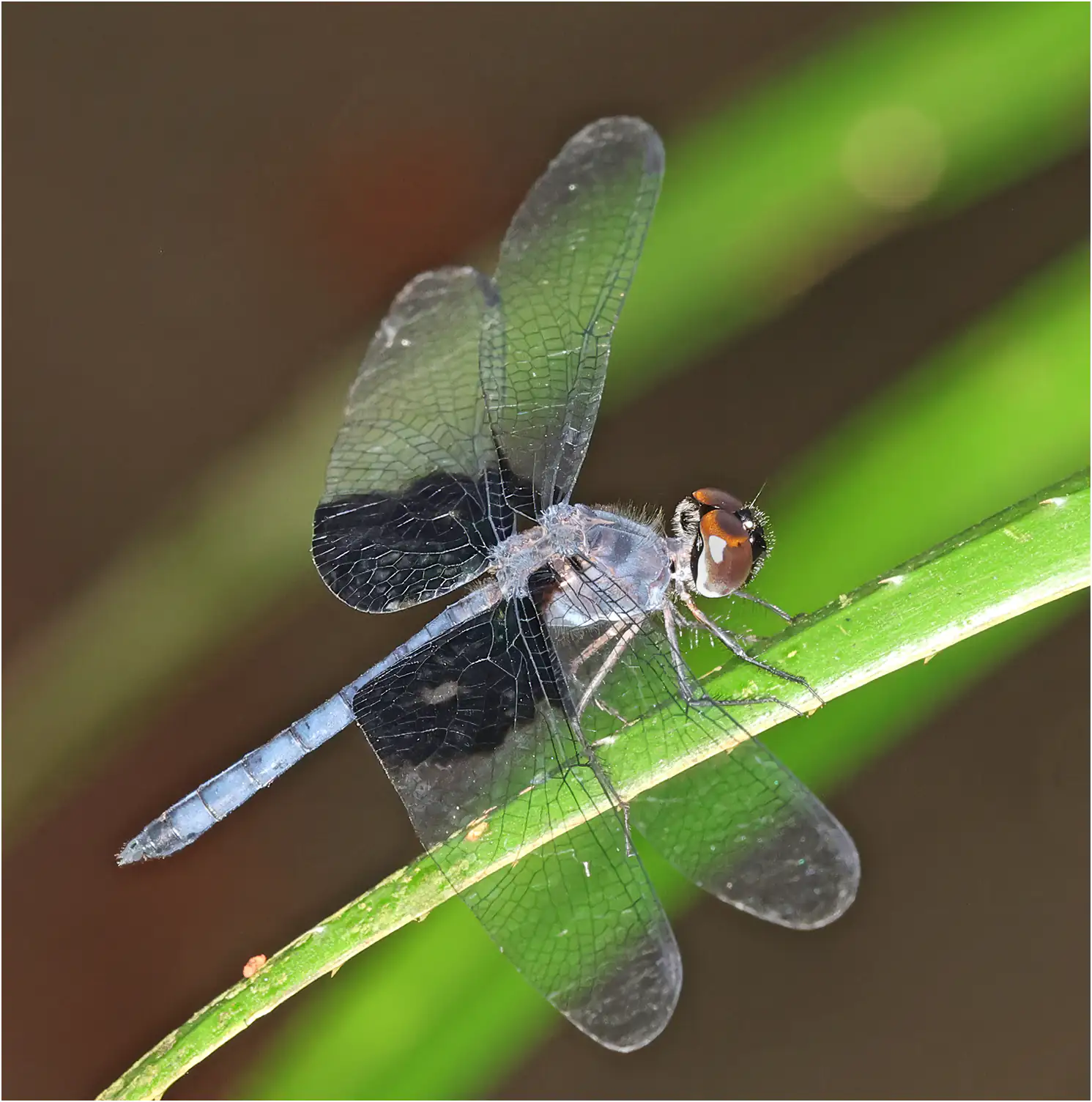
These first three photos certainly show a young individual, for its light coloration, both the blue or gray of its abdomen and its eyes. This subject was in a rather magical place, a karst landscape in a dense and dark forest, made up of enormous boulders crossed by a very slow stream. Access to photograph it was not easy…
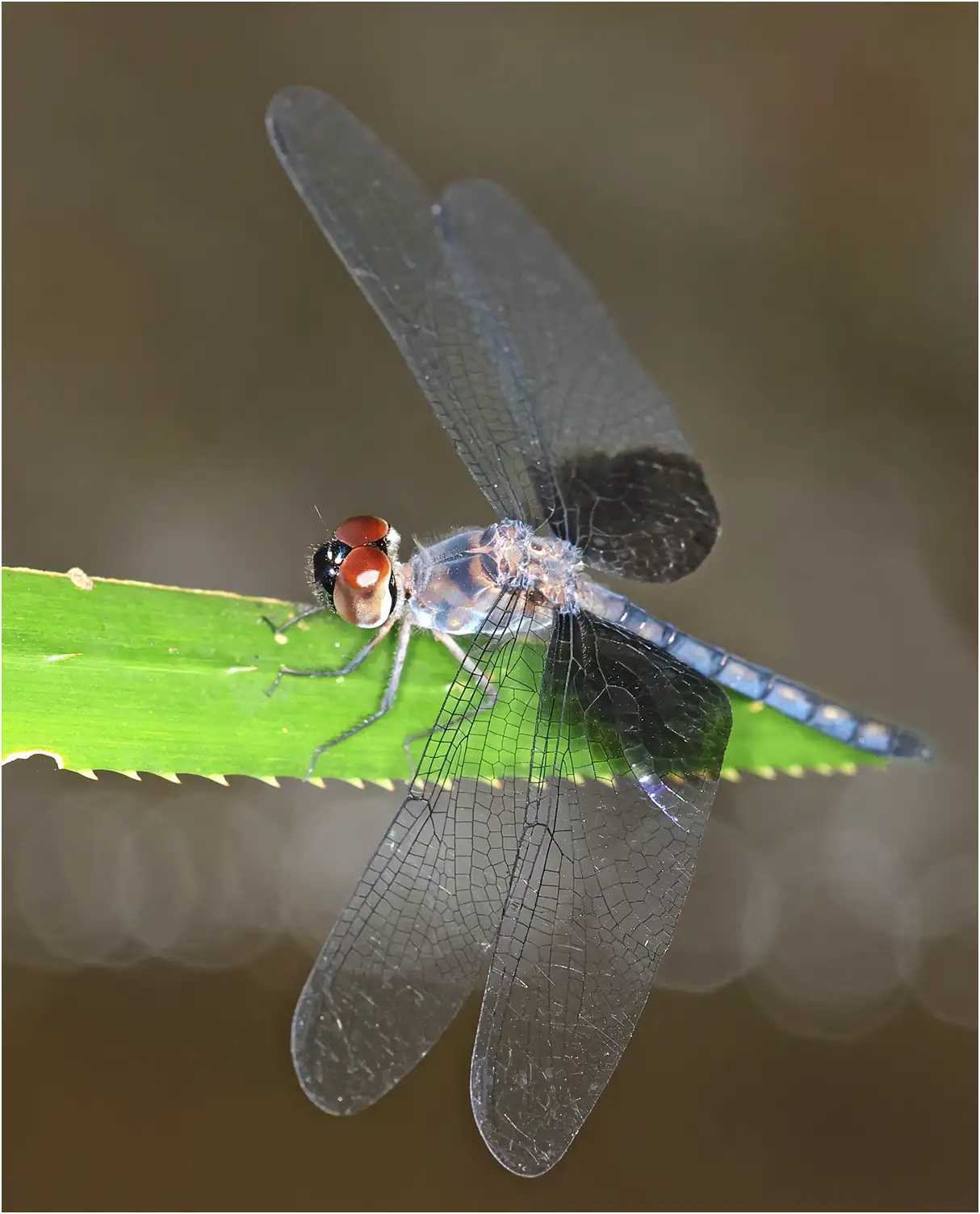
It is found in forests, on slow-moving rivers or streams, in swamps or peat bogs.
At breeding sites, males perch on a branch above the water and confront their rivals by charging towards them, displaying their basal wing spots that glitter in the sun. Females lay their eggs by striking the water with their abdomen to propel their eggs accompanied by water droplets towards the shore. They are guarded by the males who fly over them in an almost rectangular circuit, with a brief rectangular flight at each corner (2).
Below is another, much more mature subject, on the same site.
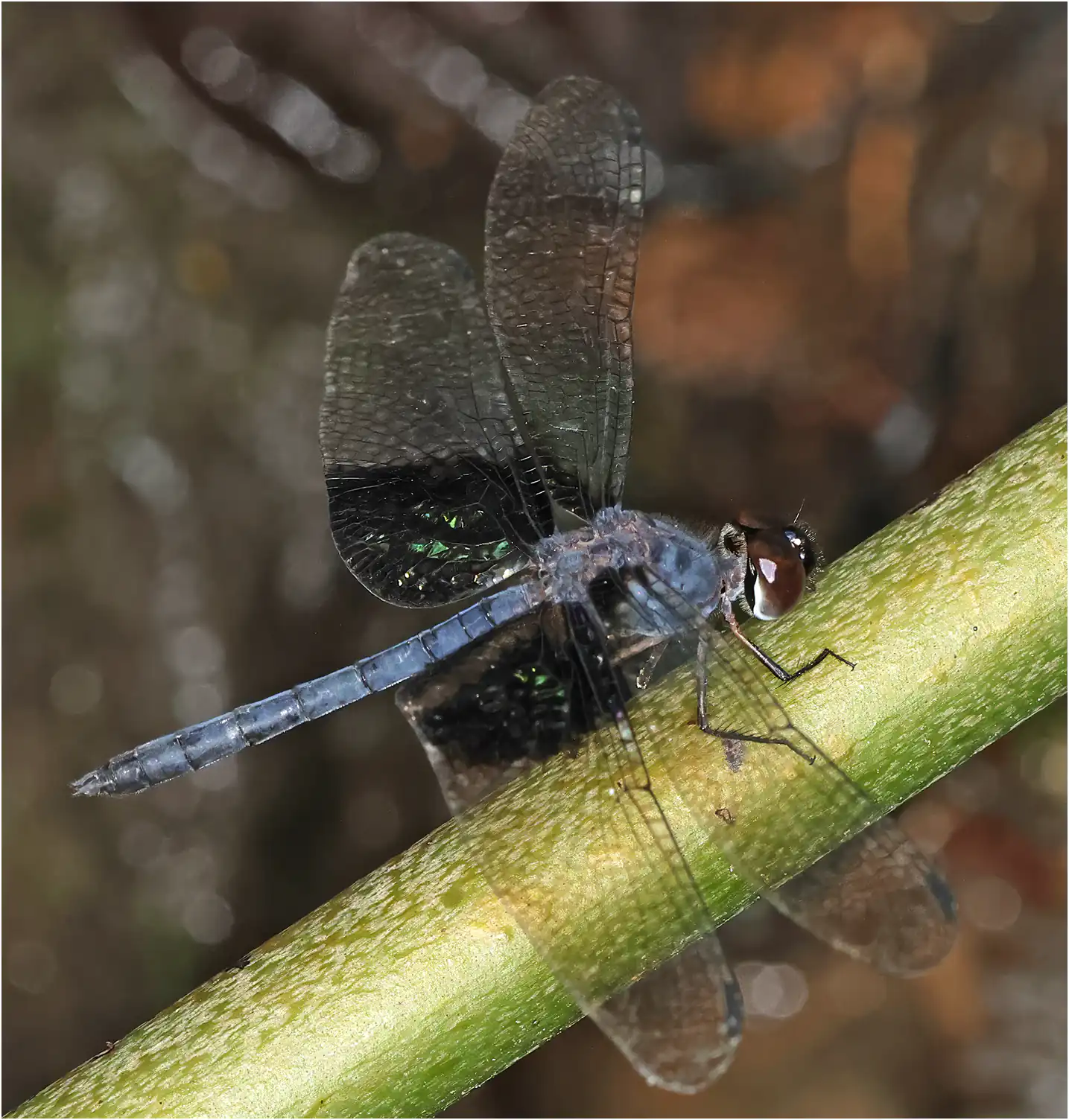
This is a species restricted to Sundaland, that is, southern Thailand, the Indo-Malay Peninsula, Borneo, Sumatra, and the surrounding islands.
English speakers call it the Treehugger because of its way of posing, seeming to embrace tree trunks; but as we will see later, T. kuekenthali adopts the same technique. The photo below was taken at the same site as the previous ones, but in a more open area, from a bridge over a small river.
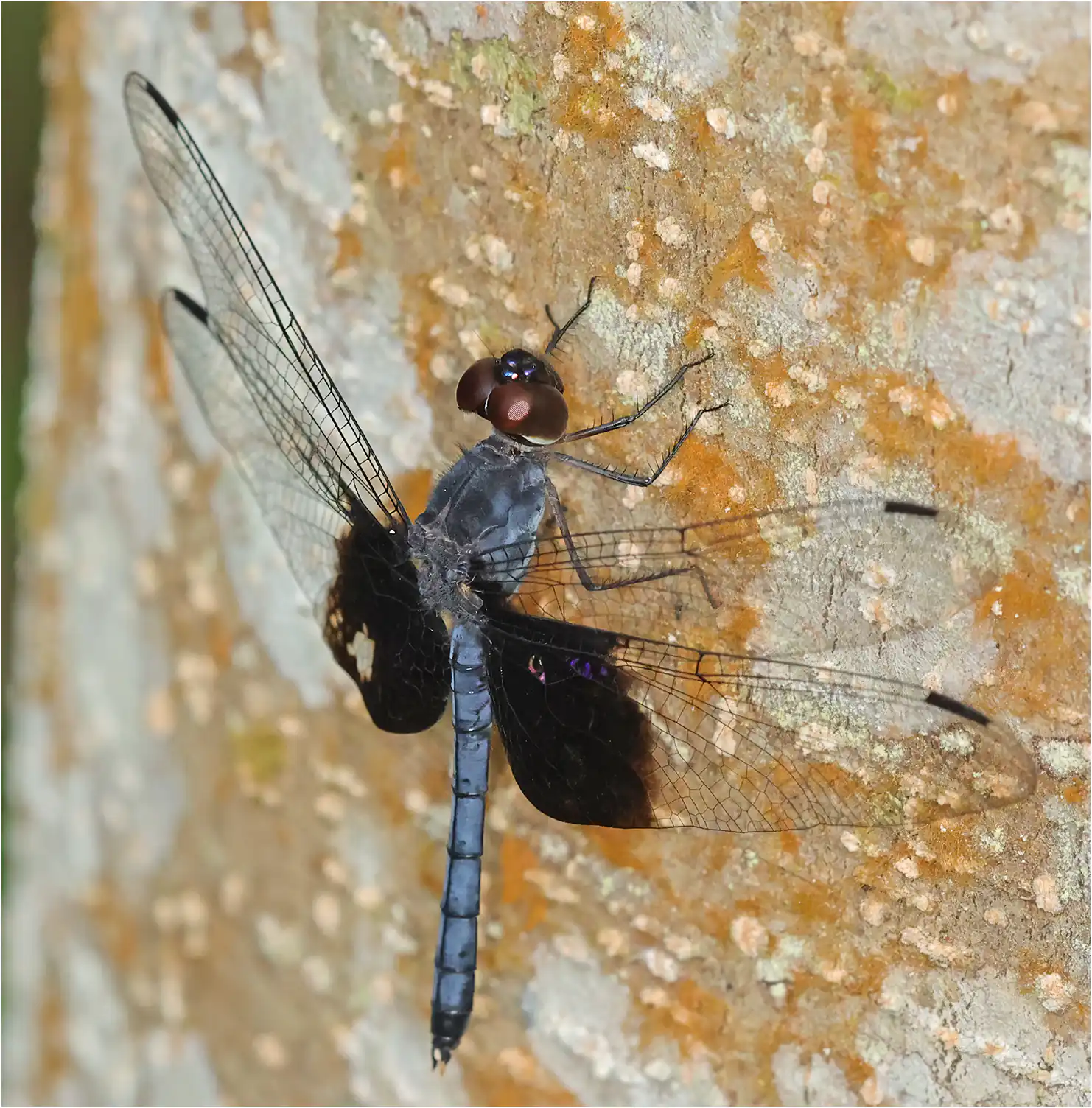
Etymology
Tyriobapta (3); Kirby created this genus name for the species torrida from the Latin adjective tyrius , which means relating to the city of Tyre (Phoenicia), a city renowned for its purple , and from the Greek baptos, which means to dye , to immerse . This of course refers, by association, to the wing coloration.
Torrida; from the Latin torridus , which means cooked, roasted , torrid, and while Kirby does not give any further indication, we read in Ngiam & Ng, 2022 (2) that this adjective could refer to the tropical and equatorial origins of this species.
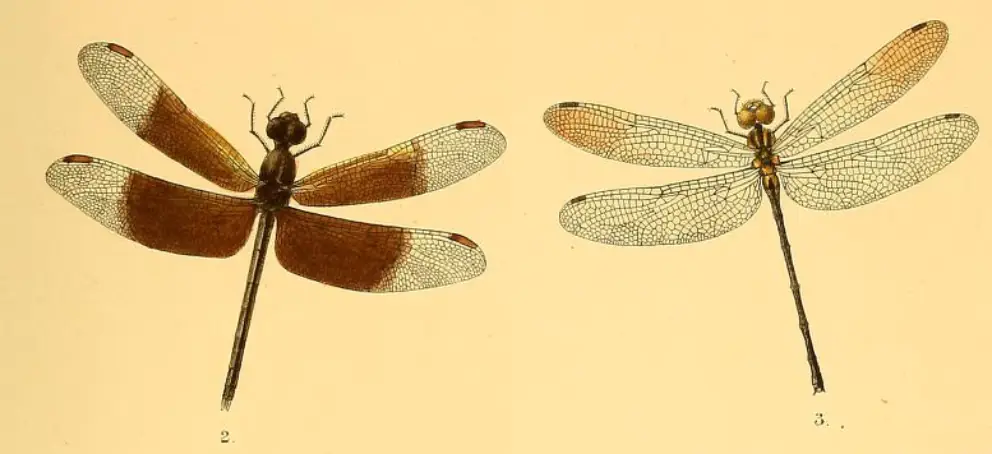
1- Kirby, 1889 – A revision of the subfamily Libellulinae, with descriptions of new genera and species, p. 338.
2- Robin Ngiam & Marcus Ng – A photographic guide to the Dragonflies and Damselflies of Singapore – John Beaufoy Publishing – 2022
3- Heinrich Fliedner, 2021 – The scientific names of Ris’ odonate taxa – Journal of the International Dragonfly Fund